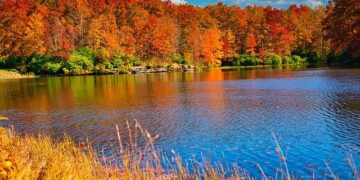New Insights into the Age Dynamics of Tropical Moist Forests
A recent study published in Nature has shed light on the age distribution patterns of regenerating tropical moist forests worldwide. This comprehensive analysis across tropical regions offers revelations that could transform our approach to forest dynamics and conservation efforts. As human activities increasingly jeopardize these essential ecosystems, understanding the distinct timelines for forest regeneration in various locales becomes crucial. With biodiversity at risk and climate change intensifying its impact, this research is poised to guide global initiatives aimed at preserving and rehabilitating one of Earth’s most vital carbon reservoirs. Experts advocate for focused strategies in forest management, emphasizing not only nature’s resilience but also the urgent need for informed stewardship amid unprecedented ecological challenges.
Exploring Age Distribution in Tropical Moist Forests
The age distribution within regenerating tropical moist forests varies significantly due to a multitude of ecological influences and human interventions. Recent findings indicate that these forests often present a patchwork of different age classes resulting from disturbances like logging, agricultural practices, and climate fluctuations. This dynamic contributes to a diverse array of habitats capable of supporting numerous plant and animal species. The primary factors influencing age distribution include:
- Soil Health: The availability of nutrients is vital for sapling growth rates.
- Microclimatic Differences: Variations in moisture levels and sunlight can create environments conducive to either younger or older trees.
- Human Influence: Changes in land use can either hasten or slow down forest recovery processes.
A recent evaluation underscores the link between age diversity and biodiversity richness within these ecosystems. Data indicates that areas with a varied mix of tree ages tend to support greater species diversity compared to regions dominated by trees of similar ages. The following table summarizes these insights:
| Age Class (Years) | Biodiversity Index | Main Tree Species | |||||||
|---|---|---|---|---|---|---|---|---|---|
| 0-10 | 15 | Pine, Guava | |||||||
| 25 | Cedar, Walnut | < tr > < td >31-50< / td > < td >40< / td > < td >Oak, Eucalyptus< / td > < / tr > < tr > < td >51+< / t d > < t d class = "wp-block-table" >< 30< / t d > < t d class = "wp-block-table" >< Chestnut, Mahogany< / t d > / / / p Regeneration Patterns’ Effects on Biodiversity and Ecosystem VitalityThe observed regeneration patterns within tropical moist forests are pivotal in determining both biodiversity levels and ecosystem health overall. These forests exhibit varied age distributions that significantly influence species composition as well as community interactions among flora and fauna alike. Key elements affecting regeneration include:
p According to contemporary research findings healthy regeneration is characterized by balanced structures across different ages which help maintain resilience against disturbances such as invasive species or climate change impacts Observations have revealed several effects on ecosystem dynamics:
|




















![Forest ecology cannot be reduced to arithmetic, says M.I. Varghese [Interview] – Mongabay-India](https://earth-news.info/wp-content/uploads/2025/12/328946-forest-ecology-cannot-be-reduced-to-arithmetic-says-mi-varghese-interview-mongabay-india-350x250.jpg)










![Forest ecology cannot be reduced to arithmetic, says M.I. Varghese [Interview] – Mongabay-India](https://earth-news.info/wp-content/uploads/2025/12/328946-forest-ecology-cannot-be-reduced-to-arithmetic-says-mi-varghese-interview-mongabay-india-120x86.jpg)